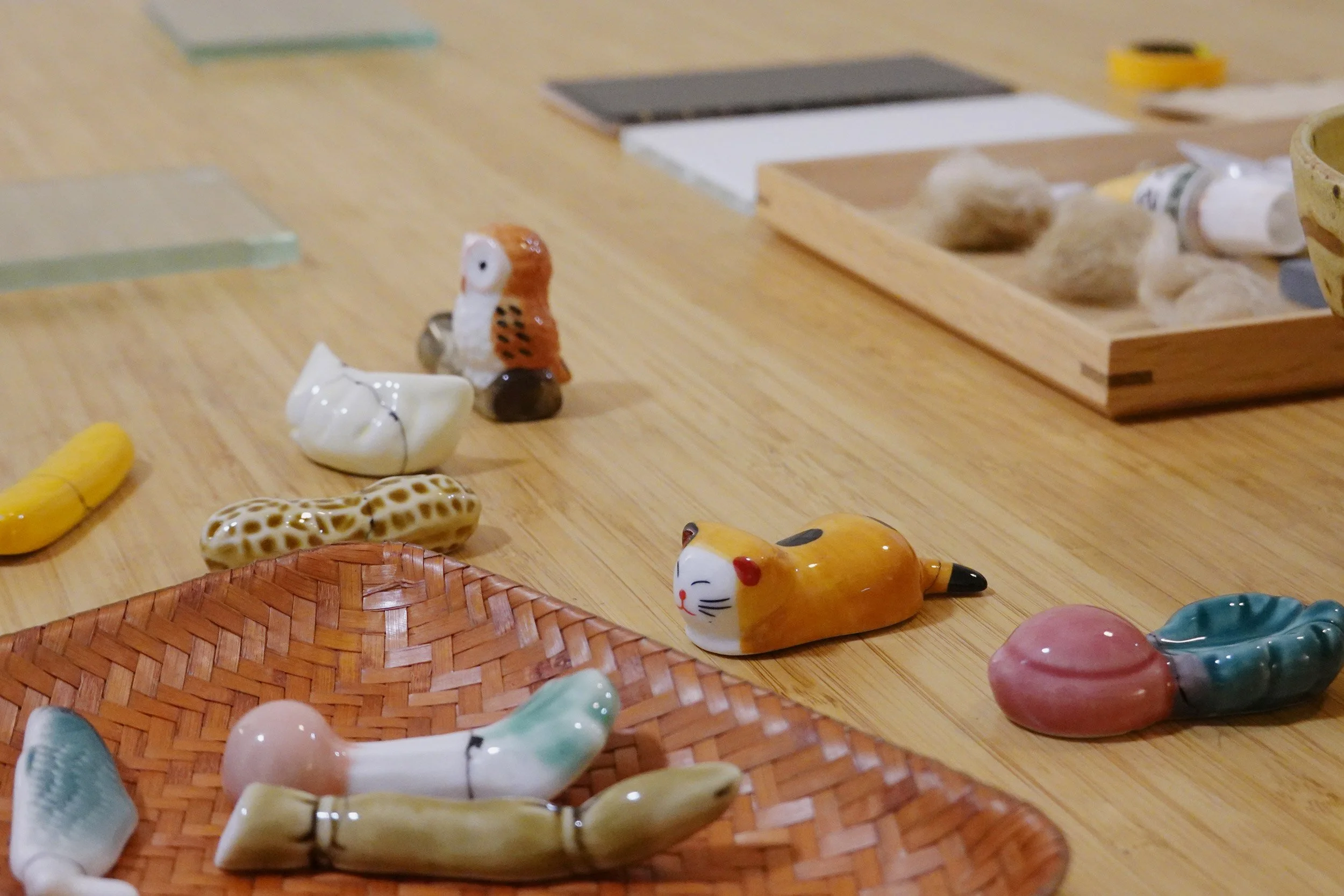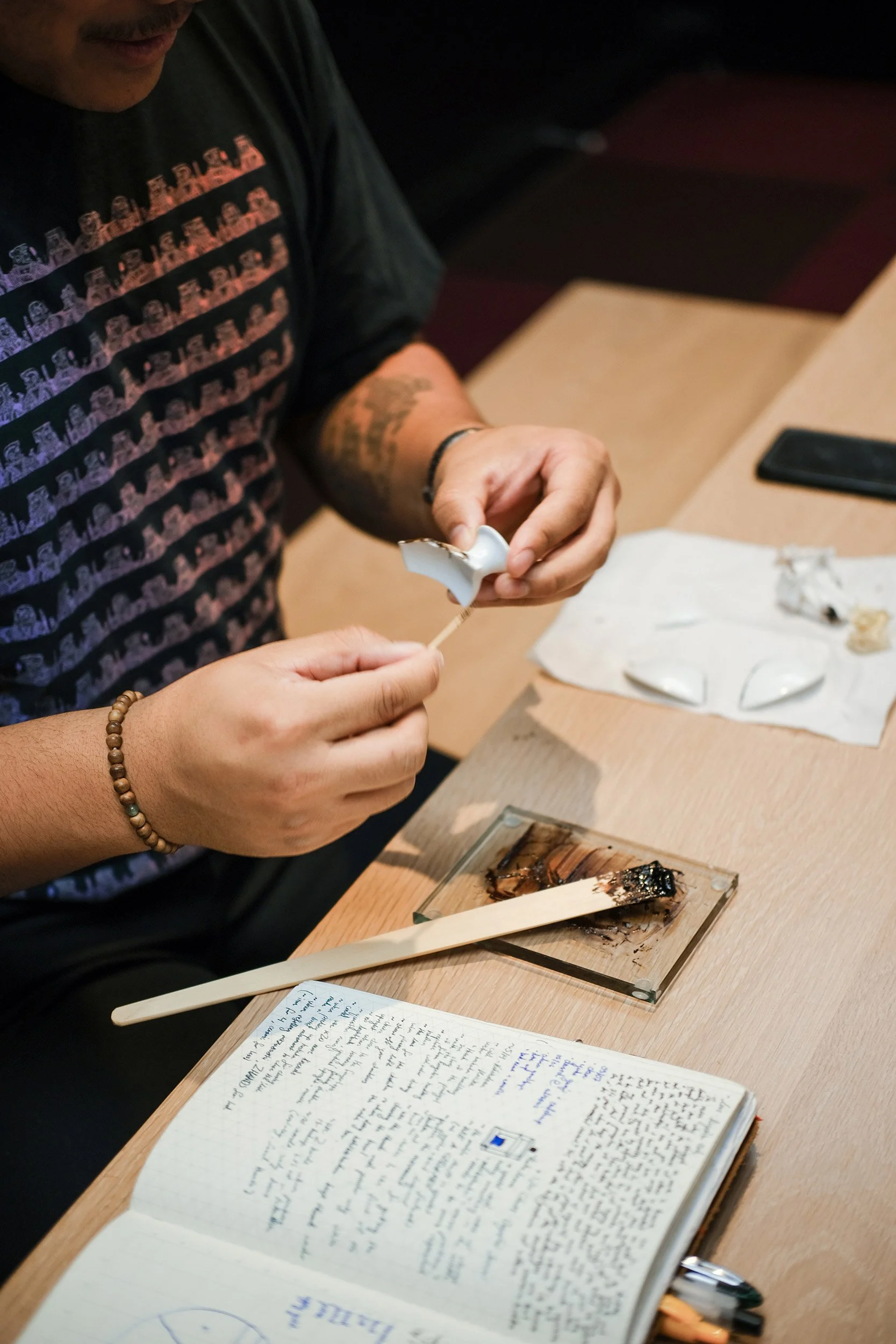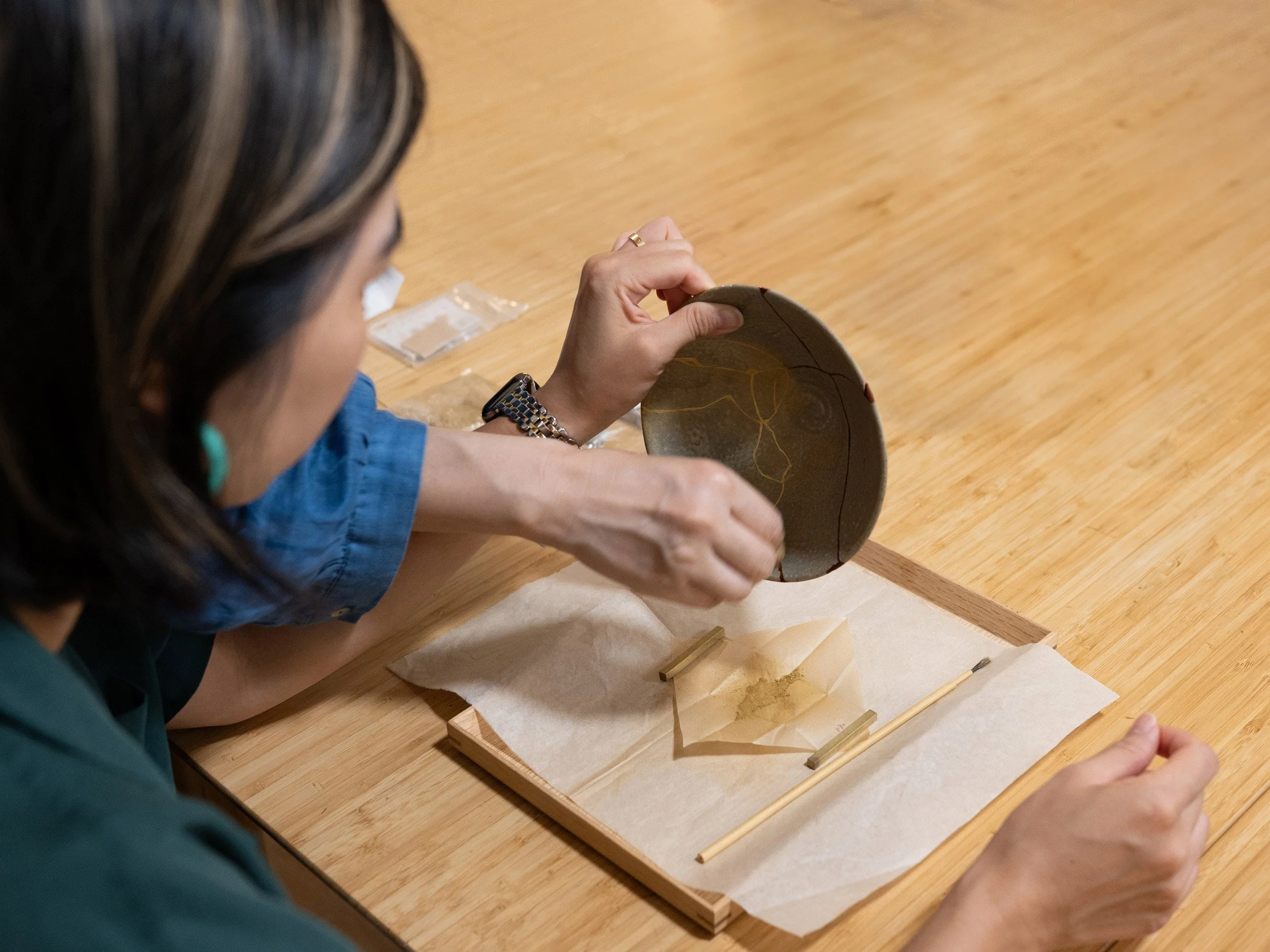
Finding perfection in the broken.
Kintsugi is more than repairing ceramics. It is the art of mending time and memory. I approach each broken piece as a new opportunity, a quiet dialogue with the object, its history, and the passage of time.
What is Kintsugi
Kintsugi, or “golden joinery,” is the Japanese art of repairing broken pottery with urushi lacquer and gold. It not only restores a vessel’s functionality, but also highlights fractures and imperfections, turning them into a distinct “scene” to appreciate — revealing the one-of-a-kind beauty in what is imperfect and impermanent.
About
makomako is a New York-based Kintsugi artist and Chanoyu practitioner. The breaking of a tea bowl led her to the study of Kintsugi. Studied with urushi and Kintsugi master Gen Saratani and other master craftsmen in Japan and China, she has honed her skills in restoring earthenware, stoneware, porcelain, Yixing ware, bamboo, agate, jade, glass, and resin.
Her approach to Kintsugi is deeply rooted in tradition, favoring the use of natural materials, urushi lacquer and gold. For her, each restored piece tells a story, offering a reflection on the human experience. In 2023, she held a duo exhibition "Contemplating at Ease" at theBLANC in New York.
Upcoming Workshops
Discover Kintsugi | An Intro Workshop
Saturday Aug.30, 11:00 – 1:30pm, or
Saturday Sep.27, 1:00 – 03:30pm
at Fou Gallery, Manhattan
An entry point into the world of kintsugi.
In this hands-on session, you’ll be guided through the essential steps of repair with urushi lacquer and metallic powder, using a small ceramic piece provided in class.
A quiet way to experience how breakage can transform into beauty, and to take home a piece of your own making.
*All materials provided. No prior experience required.
Discover Kintsugi | with Your Own Piece
Saturday, Aug.23, 2:00 – 5:00pm
at Nihonsan Tools, Brooklyn
For those who wish to bring something personal.
This Intro workshop offers the chance to work on a small chipped or cracked item you bring with you, while also completing the golden finishing step on a provided ceramic piece.
Because kintsugi is a slow process that requires time for layers of lacquer to cure, repairs on your own piece cannot be completed in a single session. You’ll be introduced to the first step, and may continue in a follow-up course if you wish to finish the repair.
*All materials provided. No prior experience required.
Kintsugi Essentials | 3-Week Course
(3 sessions/ 2 hours each)
at 7s Art, Manhattan
A deeper journey into the art of authentic Kintsugi.
Over three weeks, you will learn to restore chipped pottery using natural urushi lacquer and real gold. Step by step, we’ll work through filling, refining, and finishing, so that a once-broken piece may return to your hands with quiet beauty.
To enrich your practice, the course also includes an optional online session, where we’ll reflect on kintsugi philosophy, material science, and the knowledge that extends beyond the classroom.
You’ll leave with a restored ceramic piece of your own, and perhaps a different way of seeing imperfection.
*All materials provided. No prior experience required.
Kintsugi Studio Session | for returning students
Every Thursday 7-9pm
at 7s Art, Manhattan
A time to continue, at your own pace.
The Studio Session is designed for those who already have some kintsugi experience—whether from my previous courses or training elsewhere—and would like guidance as they refine their skills.
Bring your own piece, and explore new challenges with guidance and materials provided. Unlike structured classes, this is a free-form workshop: a chance to refine techniques, take on difficult repairs, and learn details not covered in the Essentials course.
With small groups of 6, there is room for quiet focus, shared progress, and personal guidance.
Kintsugi Repair
Every object carries memory. If you have a broken vessel that holds meaning, I invite you to consider repairing it.
I offer professional kintsugi restoration using natural urushi lacquer and precious metals. With care, skill, and sustainable materials, each repair honors the object’s history and the memories it holds, transforming fractures into visible “scenery”. Together, we can find lasting beauty in its cracks and impermanence.
Please complete the form below so I may learn more about your piece and provide a thoughtful assessment.
FAQs
-
Kintsugi (金継ぎ), or “golden joinery,” is the Japanese art of repairing broken pottery with natural urushi lacquer and precious metals. Kintsugi highlights the cracks and damaged parts, transforming each fracture into part of the object’s story and beauty.
-
While traditionally used for ceramics such as stoneware and earthenware, Kintsugi techniques can also be adapted for materials such as porcelain, glass, jade, stone, wood, bamboo, and others. If you have special materials, please consult the artist.
-
Yes. Once fully cured, urushi lacquer becomes non-toxic and durable, making it safe for tableware.
-
A chipped or cracked piece typically takes around 8 weeks to complete. A broken piece usually requires 12 weeks or longer, depending on the extent of the damage, the size of the vessel, and the curing time required for natural urushi lacquer. Unlike modern glues, urushi must cure under specific conditions of humidity and temperature, which makes the process slower but ensures a lasting repair.
-
With proper care, a Kintsugi repair can last for many years. However, repaired pieces should be treated gently—avoid dishwashers, microwaves, and sudden temperature changes, as they may weaken the bond.
-
Yes, but with mindfulness. Kintsugi repairs are functional, but they are also a delicate art. They are best for light, mindful use, rather than heavy daily wear.
-
The cost varies depending on the size of the object, the extent of the damage, and the chosen finish (gold, silver, or urushi). Once I review your photos and story, I will provide a tailored estimate.
-
Yes. Clients from outside New York can ship their pieces to me. Please ensure careful packaging and insurance when sending fragile items. Return shipping costs are the responsibility of the client.





